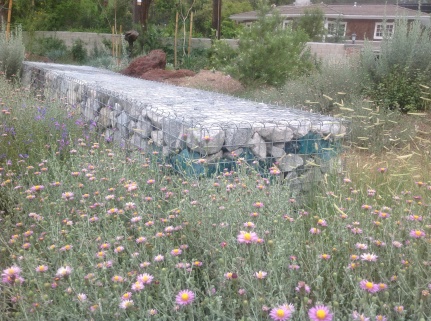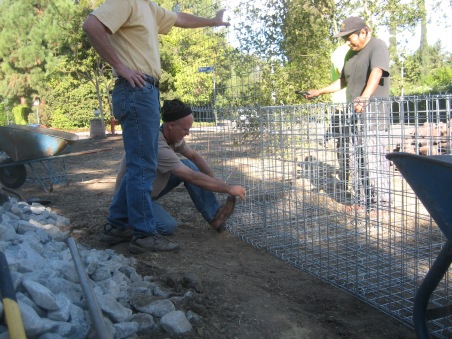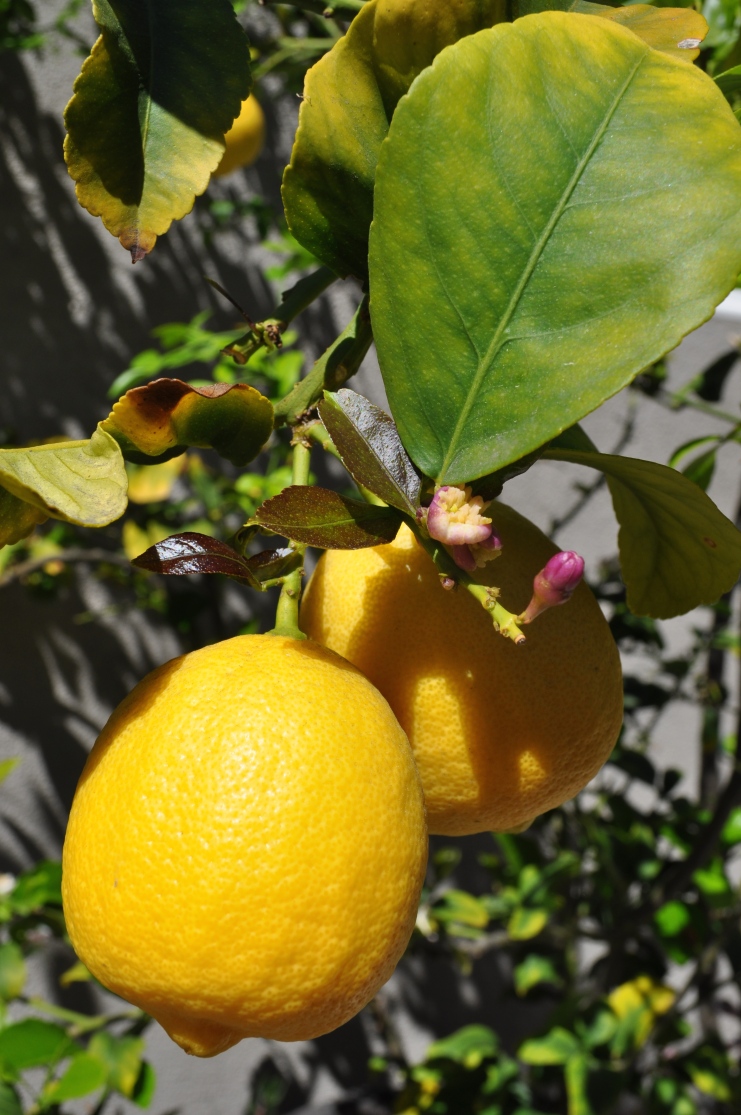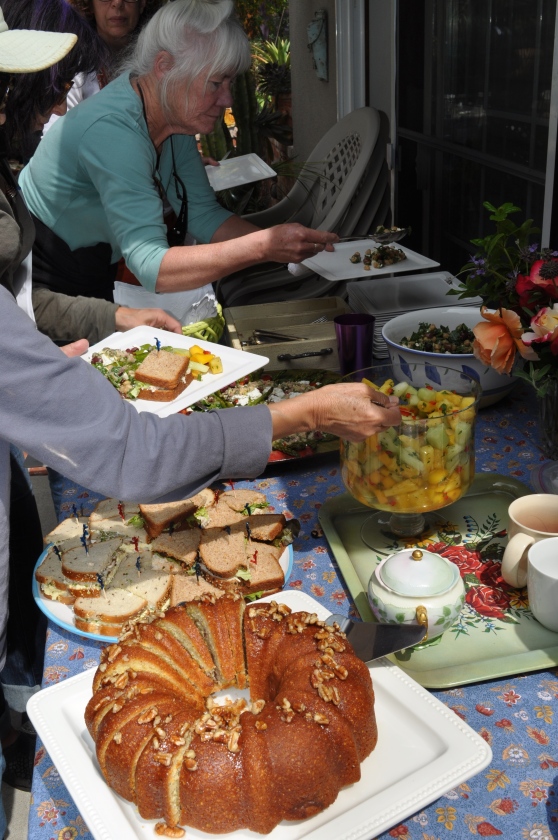Seriously, that is the most frequently asked question. My answer is that the rocks are wild and can not be released from their cages.
I recently hosted one of my favorite projects, Oakdell Sanctuary, on the Theodore Payne Foundation Native Plant Garden tour. Many people were fascinated by the gabion wall that I had designed. Unfortunately there are the vocal few that don’t get it and flat out don’t like it. There are some that have changed their minds once they see the plants grow in and soften the effect of the wall. Still others clearly understand when they get out of their cars and stand on the inside of the wall.
I always wanted to do a gabion somewhere and this location presented the perfect opportunity. The project is on a curve on a main street that is heavily trafficked. The wall will protect anyone walking on the path from any stray cars. No car will go through that wall. The wall needs zero maintenance and it is not coming down in an earthquake.
For those and any others that are fascinated by the wall, I thought I would share some of the construction process. A shout out to Andreas Hessing of Scrub Jay Studios for his generosity in sharing advice and tips.
The cages were delivered flat, much the same as a moving box you would purchase and then have to assemble. There are various methods used in lacing the boxes together, but ours came with lengths of wire in an Archimedes coil. This was very cool because if you got the sides lined up correctly and just started inserting the coil, it would then take off and run itself down and sew a perfect seam.
The boxes needed to be filled and reinforced one foot at a time. It is a bit tricky at the end to make sure you fill the box completely but not too much that it bulges, so you can get it laced up nice and tidy.
The plantings add the finishing touch. In this case, I chose plants that are suited for bird habitat, creating a mini bird sanctuary. “Are you getting a lot of birds?” they ask. If you build it, they will come.
For those who are still confused, the rocks stay in the cages.














